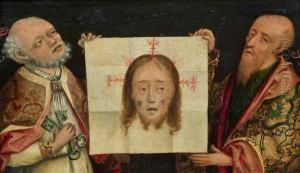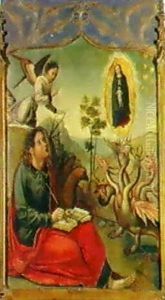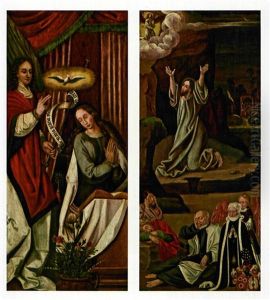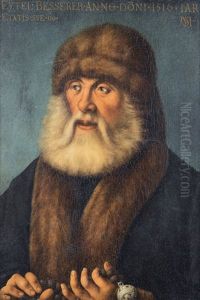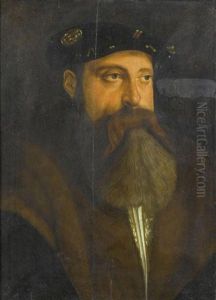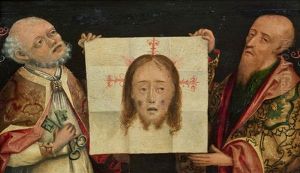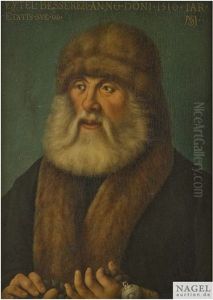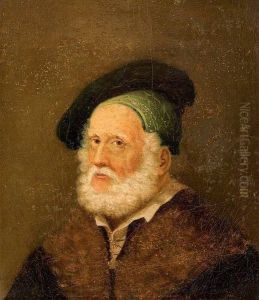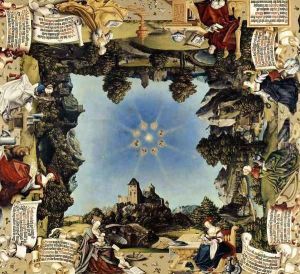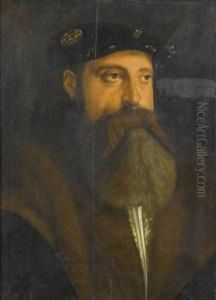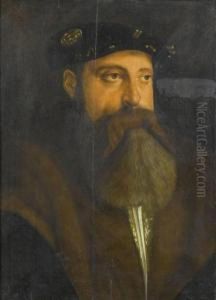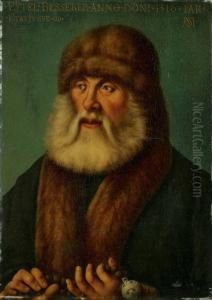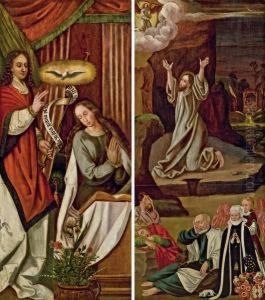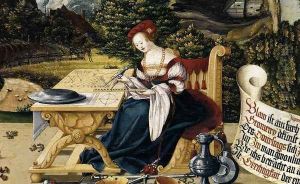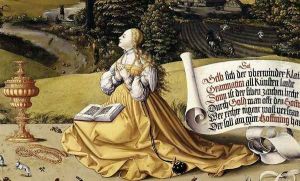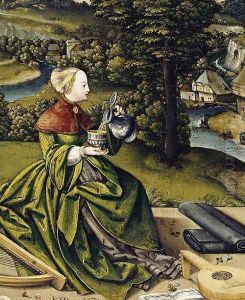Martin Schaffner Paintings
Martin Schaffner, a notable figure in the Northern Renaissance, was an artist whose contributions significantly enriched the artistic landscape of Southern Germany, particularly in the city of Ulm. Born around 1478, Schaffner's early life is shrouded in mystery, much like many artists of his time, with limited records detailing his upbringing or initial training. However, it is widely believed that he was deeply influenced by the rich cultural and artistic environment of Ulm, a city renowned for its thriving community of painters, sculptors, and craftsmen.
Schaffner's career took a definitive shape in the early 16th century, as he began to establish himself as a master in the art of panel painting and portraiture. His works are characterized by their meticulous attention to detail, vibrant color palette, and the emotional depth of the figures he portrayed. He was profoundly influenced by the works of his contemporaries, such as Albrecht Dürer and Hans Holbein the Younger, which is evident in his adoption of their techniques and the incorporation of Renaissance ideals into his art.
One of Martin Schaffner's most celebrated contributions to the art world is his involvement in the decoration of the Ulm Münster, the city's magnificent Gothic cathedral. His work for the cathedral and other churches in the region reflects a deep understanding of religious themes, coupled with a remarkable ability to convey these themes through his art. Schaffner's altarpieces, in particular, stand out for their intricate details and the use of iconography, which were instrumental in conveying complex theological concepts to the lay population.
Despite his significant contributions, Martin Schaffner remains a somewhat elusive figure in art history, with many of his works either lost or attributed to other artists of his time. Nonetheless, the surviving pieces of his oeuvre continue to be studied and admired for their artistry and historical value. Schaffner's legacy is that of an artist who was deeply embedded in the cultural and artistic movements of his time, yet managed to carve out a distinct identity that resonated with both his contemporaries and generations of art lovers to come.
Martin Schaffner's death around 1540 marked the end of an era for the Ulm school of painting, but his work continues to be a testament to the vibrancy and depth of the Northern Renaissance. His life and art remain subjects of interest for historians and art enthusiasts alike, offering insights into the complexities and nuances of this transformative period in European art history.
